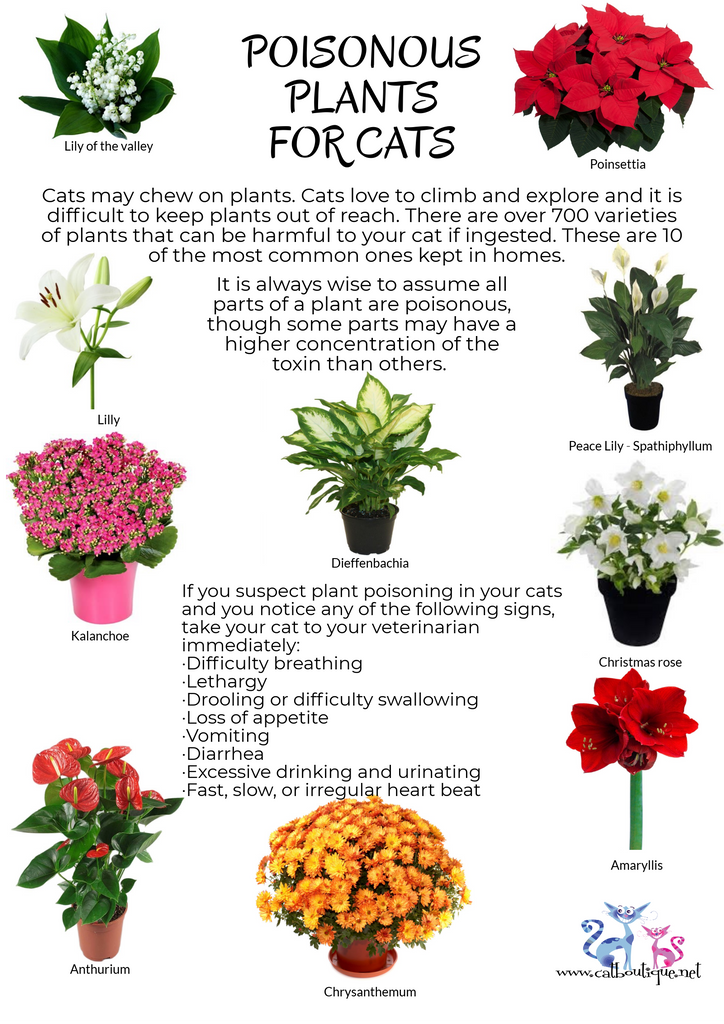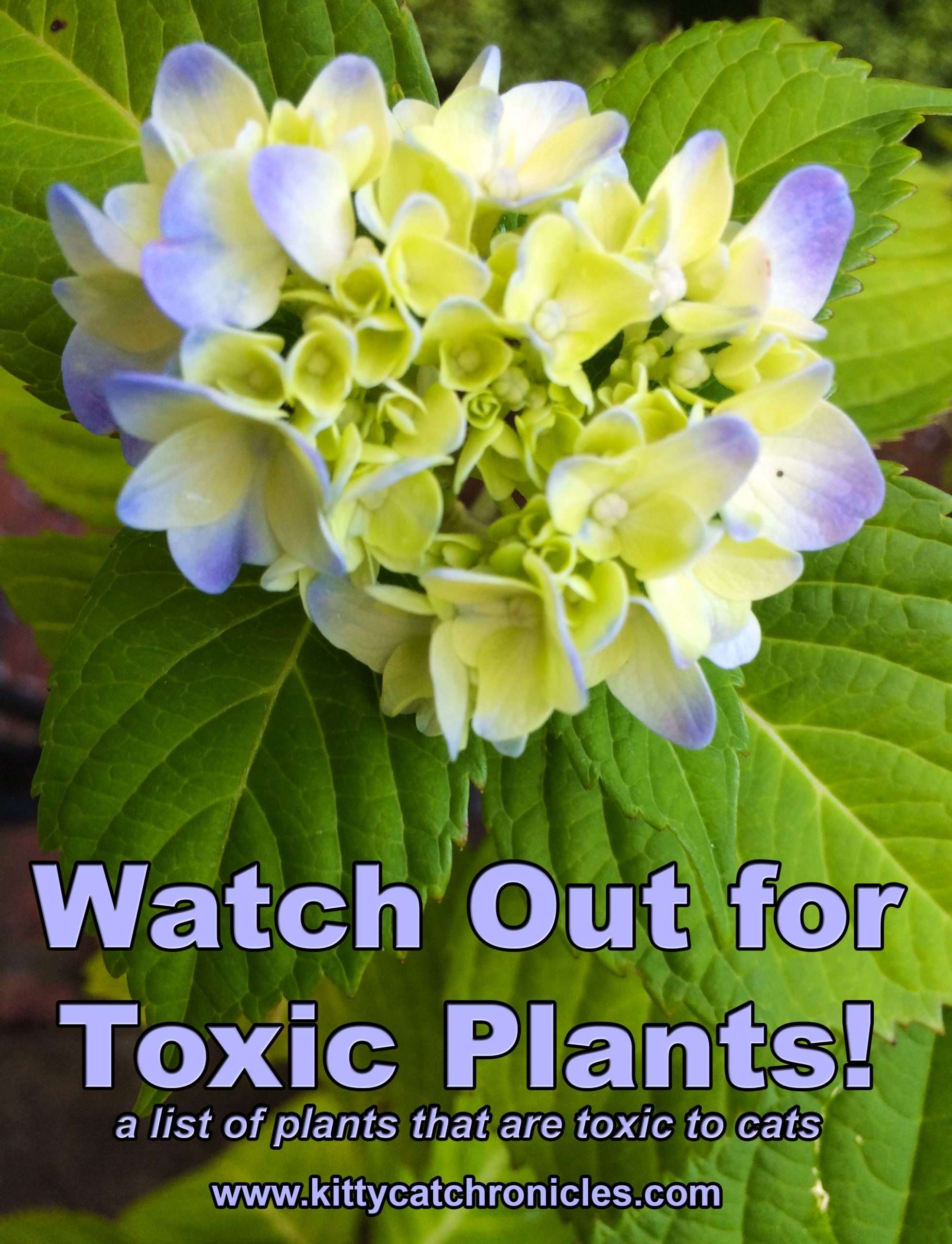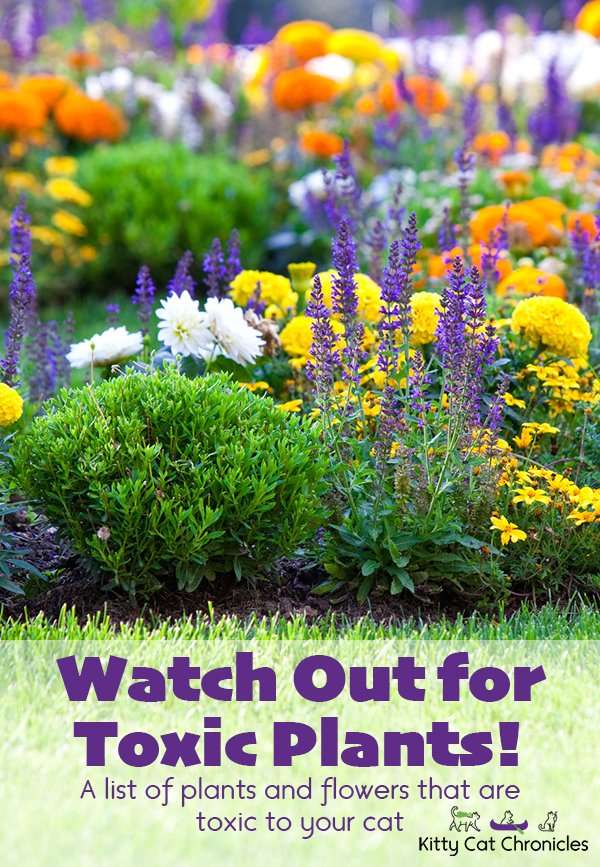Why Do Cats Like Flowers So Much
If you live with cats, you know how curious they can be, especially when theyre younger. Some cats are attracted to flowers for their taste or texture. Cats might go for certain plants because they enjoy the mouth feel, says Dr. Cathy Lund, a veterinarian with City Kitty Veterinary Care for Cats in Providence, Rhode Island.
Cats also have an excellent sense of smell, with about 14 to 20 times the smell receptors that people do, says Kelley. They are likely to know about a change in their environment and often investigate it, which is when they are exposed, he says. Each is different and some aggressively seek out certain smells when available, while others seem not to care or respond.
What Plants Are Toxic To Cats
Many pet owners keep common plants in their homes without realising that they are poisonous to cats. Not all of them will prove fatal if chewed or eaten, but some can definitely kill your much-loved feline friend. Never assume a cat will instinctively try not to eat a poisonous plantall too often, cats end up being rushed to the vet suffering from poisoning as a direct result of chewing on or eating toxic houseplants.
In this article, I hope to list many of the most common plants that pose health risks to cats so that you can ensure you don’t bring them into your home. If you already have any of these in your home, it may be a good idea to remove them. Many of these species are commonly kept as houseplants, so I am guessing that some will come as surprises to unsuspecting cat owners.
Safety Note
If your pet shows any signs of distress, contact your veterinarian immediately and make them aware of anything the animal may have consumed. Do not attempt to diagnose or treat any ailments yourself. This list is not exhaustive, so contact your vet before introducing new plants to your home.
Aloe Vera
- Common names: Narcissus, jonquil, paper white
- Toxic to: Cats, dogs, horses
- Symptoms: Vomiting, salvation, diarrhea, low blood pressure, convulsions , tremors, cardiac arrhythmias
- Note: The bulbs are the most poisonous part of the plant.
Staghorn Fern/stags Horn Fern/elk Fern
Easy to identify by its stag antler/moose antler-shaped leaves. Native to Australia, these ferns tend to grow on trees rather than on the ground although if you are shopping for one it is likely to come in a pot. In the wild, these grow to a mighty size, but in a pot or outside its normal environment growth is going to be small and manageable. Very distinctive-looking plants make this a houseplant that is growing in popularity allied to the fact they are reasonably easy to look after.
Light Conditions: Bright indirect light doesnt survive under just artificial light.
Watering: Wont tolerate overwatering likes misting and soaking more light more water. Generally, water once per week.
Read Also: How To Keep Stray Cats Off Outdoor Furniture
Other Poisonous Christmas Plants For Cats
Taking into account the toxicity of the poinsettia, it is important that you take precautions both with this plant and with other Christmas plants if you have cats. Other poisonous Christmas plants for felines include the following:
- Mistletoe: as with poinsettia, ut is not very toxic, but a large intake of the mistletoe plant can cause harm to a cat. You must place it in an area which is difficult access by the animal.
- Christmas tree : its leaves are rigid and pointed, so they can pierce the intestines of cats.
- Holly: holly is a very toxic plant for cats. Eating its berries can cause diarrhea and vomiting.
What Parts Of The Plant Are Toxic To Cats

The pollen, needles, seeds, flowers, and leaves are potentially toxic to cats. This means that if a plant is listed as toxic, you should keep it either out of reach or out of the home completely. Which part of the plant is dangerous can also depend on its species.
For example, all parts of the Sago Palm contain cycasin, which can cause liver failure in felines. On the other hand, castor bean seeds pose a greater threat to cats than the rest of the plants parts. Still, we dont recommend putting one of these plants in a space that is easily accessible by your pet.
You can remove the berries from English Ivy, but the leaves are still harmful. All parts of a lily are highly toxic to felines. Pruning leaves or removing seeds are good preventative steps, but the most prudent choice is to keep the plant out of reach from the animal or choose a non-toxic species.
Don’t Miss: Cat Years Vs Human Years Calculator
Popular Houseplants That Are Toxic To Cats
The Spruce / Krystal Slagle
Houseplants are a common sight in nearly every home. They brighten your living space, help purify indoor air, and have been shown to help reduce anxiety and depression – plus many people find caring for plants therapeutic. Unfortunately, if you have cats there are many houseplants that you should avoid bringing into your home due to their toxic properties – especially since cats are notoriously mischievous and prone to chewing on things. Here are some popular houseplants that you should avoid if you have cats.
Cast Iron Plant/ Bar Room Plant
A native of Japan and Taiwan, the cast iron plant derives its name from the fact it can be neglected without suffering too much long-term damage. Broad, floppy leaves that shoot upwards from the pot make this evergreen a popular good looking plant. Able to withstand drought, pest, and poor light means even beginner gardeners find this plant easy to maintain and keep looking good. If you want the nearest thing to an indestructible house plant this is it.
Light Conditions: Avoid direct sunlight.
Watering: Water regularly in summer, cut down in winter.
Read Also: Why Was Cat Weird In Victorious
How To Diagnose Hyacinth Poisoning In Cats
You can diagnose hyacinth poisoning in cats by keeping an eye out for initial symptoms and taking your cat to the vet.
If you are concerned about your cats health or if severe symptoms concerning breathing and heart rate have begun to develop, bring it in for a professional evaluation.
If the cats essential functions need to be stabilized, treatment may begin before a diagnosis is made.
If you see your cat eating plant material and arent sure what it is, bring a small clipping to the vet for identification. Giving your cats complete medical history can also help them obtain the care they need.
The cat will be given a thorough physical examination to identify any symptoms that have appeared.
Blood samples from your cat will be used for routine tests. A full blood count and a biochemical profile are usually included in these assays.
Urine samples may also be analyzed to see if the kidneys or liver have been harmed, which is common with calcium oxalate toxicity.
In severe circumstances, the veterinarian may listen to the cats heartbeat and respiration and detect irregularities.
Signs Your Cat Has Consumed A Toxic Plant
There are several reactions cats can have to toxic plants, and you may be able to assist in their treatment by informing the vet of their signs. Well split common symptoms into mild, moderate, and severe so that you have a good idea of their condition. These are the mild indications of poisoning:
Don’t Miss: What Is Cat Years In Human Years
Common Garden Plants That Are Toxic To Cats
Franny Syufy is a cat expert with over two decades of experience writing about feline anatomy and medical conditions. She is a professional member of the Cat Writers’ Association, won the prestigious PurinaOne Health Award for her writing, and authored two books on cat care.
- Pin
A number of common garden plants are actually toxic to cats. When grass is available, most cats will not eat outside plants or flowers. Occasionally, out of boredom or curiosity, a cat may nibble on a leaf or stem. While it’s rare that a cat will consume a large enough amount to become ill, it’s better to be safe and know which plants are potentially harmful and by what degree. Some may cause kitty just a little discomfort, and other plants can be lethal.
The plants outlined are some of the more popular plants that can harm your cat. This is not an exhaustive list and you’ll also want to refer to the ASPCA’s toxic plants list to ensure your pets stay safe in the garden.
If you believe your cat has eaten any of these and is showing signs of being sick, contact your veterinarian or call the Animal Poison Control Center immediately.
Lily Of The Valley Plants
Looking at the petite petals on this overall dainty looking plant, you wouldnt guess the powerfully toxic punch it packs. Although it is different than the previously mentioned species of Lily and does not result in acute kidney failure, it is still quite poisonous and requires quick action on your part if you catch your favorite furry friend partaking in a Lily of the Valley snack.
Don’t Miss: Love Crafts Cat
Help I Think My Cat Ate One Of My Plants What Do I Do
If you believe that your cat may have ingested a poisonous plant, remove the plant and contact your veterinarian immediately.
Symptoms to watch for include:
- Difficulty breathing
- Excessive drinking and urinating
- Fast, slow, or irregular heartbeat and weakness
Other plants, while not considered toxic, can also have unwanted effects on your cat, such as localized irritation of the skin, mouth, and stomach.
Look Out For Lilies: Toxic To Cats

Lilies are at the top of the list. These gorgeous bloomsfound commonly in bouquets and growing in the gardencan be extremely dangerous to cats. Theyre such a common threat Brutlag and her team created the No Lilies for Kitties! campaign to warn cat owners about the dangers of these toxic plants. Varieties of lilies that have been identified as particularly toxic include:
- Asiatic lily, including hybrids
- Daylily
Also Check: Why Is Cat Crazy In Victorious
Even Safe Plants Can Pose Dangers To Cats
Wismer suggests that you keep these plants and flowers out of reach of curious cats even though they are considered safe, because there are other dangers to watch out for.
Most cut flowers come with a powdered flower food to keep them fresh, and this can be toxic to cats. Even the vases could pose a problem. Cats especially like to drink from vases, so make sure the cat cannot overturn heavy vases and hurt themselves, Wismer adds. Breakable vases can also be a hazard for your petsand you, when you have to pick up the pieces.
Karen Lawrence, director of The CFA Foundation and manager of the Feline Historical Museum, suggests using hanging planters as a way to keep plants out of the reach of your pets.
Is Hyacinth Poisonous To Kittens
If a cat consumes a big amount of the hyacinth bulb, the effect might be lethal. Hyacinth poisonings are uncommon, although they do occur. Due to their small stature and high levels of curiosity, kittens are the most vulnerable. Keep this plant out of reach of your cat. To keep your cat from devouring hazardous plants like the hyacinth, its best if you dont let it outside.
You May Like: Vetropolycin For Cats Eyes
Which Christmas Holiday Plants Are Toxic To Cats And Dogs
Poinsettias aren’t the only holiday greenery that can turn your pets green. While they look pretty and festive, there are a variety of familiar flora that can be toxic to cats and dogs. Before you buy a bunch of live plants and sprigs this Christmas, consider how they might impact your pet’s health.
Are Lilies Poisonous To Cats
According to Pet Poison Helpline, lilies are one of the top ten cat poisons.
True lilies and daylilies are so incredibly toxic to cats that they arent ever allowed in my house, says Bischoff. The prognosis for a cat with lily poisoning is poor to grave.
All parts of the plant, including the pollen, should be avoided as they can cause kidney failure in cats.
Early symptoms of lily poisoning include excessive salivation or drooling, vomiting, and lethargy, which can range from mild to noticeable, says Kelley.
Any exposure is considered a severe emergency, and decontamination and detoxification with supportive care is key to long term survival and minimizing damage, he says.
You May Like: Wood Pellet Sifting Litter Box
Are Lilacs Poisonous To Cats
One of springs most aromatic flowers, the common lilac is a violet-colored shrub that can also come in shades of lavender, burgundy, white, yellow, and blue.
Lilacs have a slightly bitter taste, which may deter cats from eating them. Even if cats do make contact with lilacs, they shouldnt become seriously ill, says Bischoff, who frequently cuts lilacs in the spring and places them around her own home.
I think in a worst-case scenario, a cat might get an upset stomach and maybe vomit or have some diarrhea, she says.
As mentioned above, while the common lilac is not poisonous, the Persian lilac is, so pet owners should know the difference between the two varieties before planting or plucking.
Protecting Cats From Flower Poisoning
Always research the flower youre planning to purchase, whether its an indoor or outdoor plant, recommends Dr. Tina Wismer, senior director at ASPCAs Animal Poison Control Center and a board-certified veterinary toxicologist. It is best to familiarize yourself with the list of toxic plants and keep these types of plants out of your home or garden for the health and safety of your pet.
If you do keep a toxic plant, keep it out of kittys reach. Typically, this includes making a physical barrier, adds Wismer. With some plants, a single exposure could be life threatening.
Cats love to dig through potting soil, says Lund, so pet parents can take steps to make potted plants and flowers unappealing to cats. If you have larger houseplants, sometimes putting rocks or other deterrents on top of the soil can limit cat access and prevent your plants from becoming another litter box.
Even if youre careful about what you plant outside on your own property, you cant control what your neighbors grow. If your kitty spends any time outdoors, keep him away from any flowers that are toxic to cats.
If you suspect your cat has been exposed to a toxic plant , contact your veterinarian, ASPCA Poison Control , or the Pet Poison Helpline .
Related
Read Also: How To Measure Cat Temperature
Are Orchids Poisonous To Cats
Orchids are part of the highly-diverse Orchidaceae family, a group of fragrant, flowering plants that most often present in various shades of pink. But they also come in other colors, including yellow, red, and green. Most orchids are considered safe for cats.
In a worst-case scenario, a cat who ingests orchids might experience mild vomiting and diarrhea, says Bischoff. With more than 25,000 species of orchids however, its best to check with a professional.
Which Houseplants Are Poisonous To Cats

Did you know that many common house and garden plants are actually toxic to pets? Pet poisoning is far more common than you think. According to the ASPCA Animal Poison Control Center, nearly 12,000 calls are related to ingesting common indoor and outdoor houseplants.
While it is possible for cats and plants to coexist, it is important for cat parents to be aware of which common indoor plants are toxic to cats to avoid putting their pets health at risk.
Don’t Miss: Gargamel’s Cat Name
Other Plants That Are Toxic To Cats:
This is by no means an exhaustive list, as unfortunately, there are many plants that pose a toxic threat to cats. Other common plants include:
- Sago Palm
- Wild Carnations
- Fern Palm
For a comprehensive list of plants that are toxic to cats, visit the ASPCA Plant List – Cats.
Given that cats can manage to get themselves into the most unlikely of positions, it is advised that cat owners simply avoid keeping toxic plants in the home or garden. While not all toxic plants can cause fatalities, the symptoms are typically quite distressing for both cat and owner.
If you are worried that your cat has ingested even a small part of a plant that is toxic to cats, take immediate action. Even if they have only licked or chewed at a small bit of the plant, depending on the species of plant, it could be fatal.
Call an animal poison control hotline immediately. Two leading helplines include the Pet Poison Helpline on 855-764-7661 and the ASPCA Animal Poison Control Center on 888-426-4435. Both can be subject to consultation fees, but are available 24/7 which is very valuable in a crisis situation where immediate action is necessary.
Alternatively, call your vet and treat the matter as urgent. The sooner your cat receives treatment, the more optimistic the outcome.
Are Succulents Poisonous
Succulents are low-maintenance plants that store water in their leaves or stems. They give their species a swollen appearance. While a variety of houseplants are completely safe for pets and humans, there are a handful of them that can be toxic. As a pet owner, you should know if succulents are poisonous and can animals eat them. Euphorbias& Kalanchoes are two types of succulents that should be planted with care and kept out of reach of children. The milky sap of the Euphorbia variety is poisonous and can react to the skin and eyes. Kalanchoe plants can cause vomiting or nausea.
Also Check: Name Of The Cat In Hocus Pocus